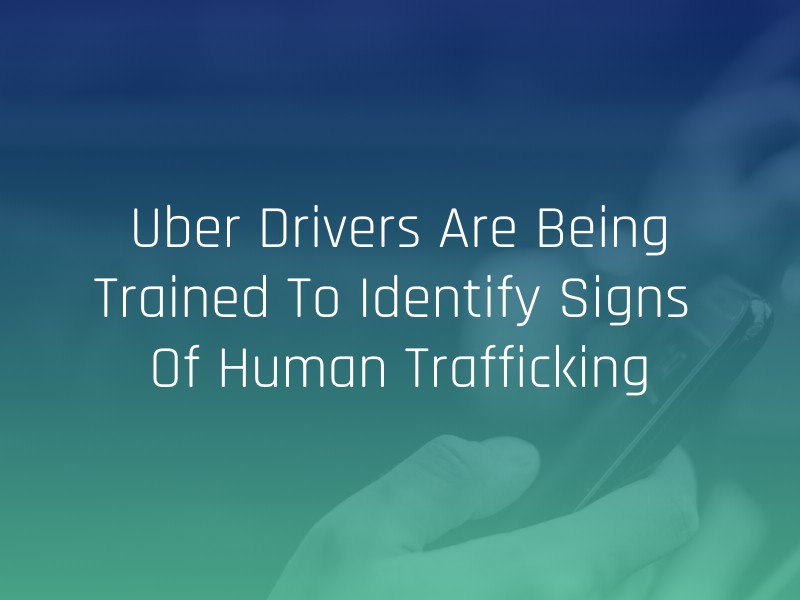Human trafficking and sexual exploitation are serious crimes that often occur undetected in the United States. A trafficked person may seem like he or she is traveling with a friend, parent, or significant other, and the people who provide services to him or her may not realize the danger he or she is in. To combat this phenomenon, Rideshare is training its fleet of drivers to identify signs of human trafficking.
The Rideshare’s Human Trafficking Prevention Initiative
Human traffickers rely on travel and transportation systems to move their victims from place to place without detection. It is crucial for all employees involved in these services to understand and identify this issue — including rideshare drivers and the companies who operate these fleets.
Over the last few years, Rideshare has partnered with community organizations, non-profits, think tanks, and other political and non-governmental bodies to fight this issue within its own fleet of vehicles. For example, the company signed onto the End Child Prostitution and Trafficking’s (ECPAT) The Code, a set of guidelines to designed by the organization for travel and transportation companies to combat human trafficking within their business operations. Now, Rideshare provides training to their drivers on identifying the signs of human trafficking and how to report an incident.
Alongside bodies such as ECPAT, the McCain Institute, the National Center for Missing and Exploited Children, and more, Rideshare provides training and disseminates materials to its workforce and users on the physical and emotional signs of trafficking, as well as signs of disturbing power dynamics.
Once a user suspects that someone is trafficking another person, Rideshare encourages him or her to take the following steps to report the incident.
- If the situation involves immediate danger, the reporter should call 911 immediately. Rideshare discourages reporters from intervening directly.
- The reporter should record important details of the incident, such as the date, time, and location of the incident, descriptions for all of the people involved, and any potentially identifiable information, such as nicknames or planned locations.
- As soon as the reporter drops off the passengers or leaves the scene, he or she should call the National Center for Missing and Exploited Children or the National Human Trafficking Hotline to report the incident again.
How to Identify Signs of Human Trafficking
Human trafficking is a highly complex issue, and it can be difficult to spot without proper training. According to ECPAT, the following signs indicate that someone may be in a dangerous trafficking situation.
- Emotional abuse and distress are major signs that someone is in danger, whether or not it involves human trafficking. If someone seems scared, disoriented, or lost, or if his or her companion seems to restrict him or her from speaking freely or moving, he or she may be in a dangerous situation.
- Human trafficking often involves signs of physical abuse as well. Bruises, burns, cuts, signs of malnutrition or dehydration, a lack of fitted or clean clothing, or a lack of medical care may be red flags.
- Human trafficking is a crime that involves unequal power dynamics. A trafficker may seem to be controlling the potential victim through acts and threats of violence or force, both verbal and nonverbal.
- Children are often victims of human trafficking, especially vulnerable youth who are homeless, runaways, part of the foster system, or LGBTQ+. If a child is traveling to an unsafe or inappropriate location at unusual times of the day, he or she may be in danger.
While additional training in the areas of sexual violence and human trafficking are beneficial to Rideshare drivers, many of these individuals may still commit violent acts against their passengers. In addition, some passengers may put the safety of these drivers at risk. Both passengers and drivers alike must stay diligent and protect themselves while using a rideshare platform.
If you are a rideshare passenger or driver who experienced an act of violence while using Rideshare or Lyft, you have many legal options available to you. You can press criminal charges against the person responsible for the crime, and you may be eligible to collect compensation for the damages you suffered as a result of the violence. Contact a rideshare attorney to discuss your pathways to justice.

